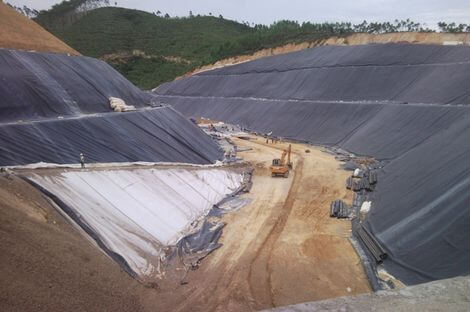Basic Introduction
Geomembranes are a type of impermeable membrane liner used in a variety of civil engineering applications. They are manufactured from polymers such as polyethylene, polypropylene, or vinyl esters and can be used for containment, seepage control, and water or wastewater treatment.
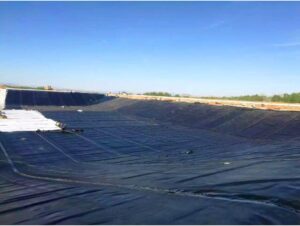
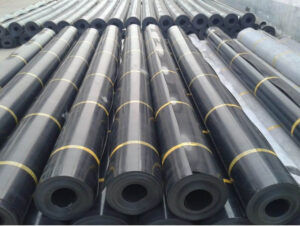
What’s more, geomembranes are also an essential element of modern geotechnical engineering and environmental protection. They are created from impermeable polymers that act as barriers to keep unwanted leakage at bay. These sheets can be placed in or around watersheds, landfill sites, or ponds to protect water sources against chemical spills and other kinds of contamination. Although geomembranes are known for their high strength and long durability, they must still be regularly cleaned to ensure they continue to work properly. All in all, geomembranes are powerful solutions that enable us to protect our environment whilst benefiting from the wonders of geotechnical engineering.
The Manufacturing Process of Geomembranes
The manufacturing process of a geomembrane is a very important procedure that needs to be done correctly in order to create a high-quality product. There are many steps involved in the manufacturing process, and each step is crucial to the overall success of the final product. First, the polymer resin is selected based on its chemical properties and compatibility with other materials. Then additives such as UV stabilizers and antioxidants are added to enhance its performance when exposed to sunlight or other environmental conditions. The mixture is then pressure-fed into a die that forms it into thin sheets which can be cut into different sizes depending on their intended application. Finally, quality control tests are performed to ensure that the geomembrane meets applicable standards before they are shipped out for installation.
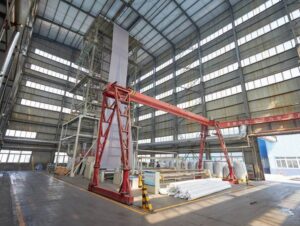
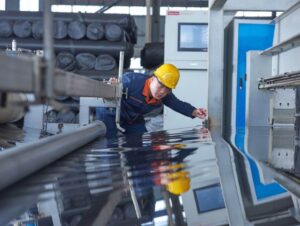
Geomembranes are made from a variety of materials, including PVC, HDPE, LLDPE, EPDM, etc.
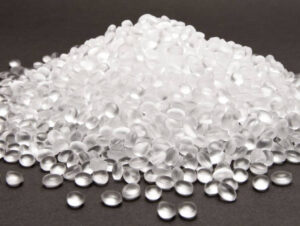
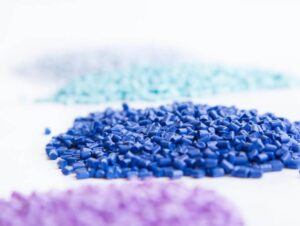
Geomembranes are used in a range of industries to help contain, protect and separate liquids or particulates. This type of geosynthetic material is constructed from some of the most durable polymers available, such as PVC, HDPE, LDPE, and EPDM. Each geomembrane type has its own benefits depending on specific project requirements. For example, PVC geomembranes boast high resistance to extreme temperatures, can be welded easily with heat-tipped equipment, and provides relatively low permeability even after damages or punctures. Meanwhile, HDPE geomembranes offer excellent chemical compatibility, UV stability, and very high tear resistance while being light enough to make installation much easier. By utilizing these various geomembrane materials together, many projects can include environmental protective coverings that meet both economic effectiveness and strict governmental regulations.
These materials are melted and extruded into thin sheets
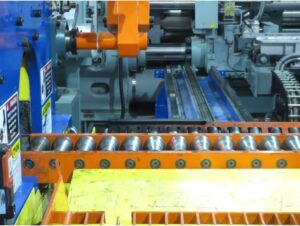
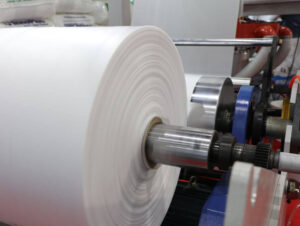
Geomembrane sheets are a type of geosynthetic product that has revolutionized waterproofing solutions. Through the process of melting and extrusion, these geomembranes can be formed into thin sheets of various widths, creating an effective barrier for water and other liquids for many applications. These geomembrane sheets are mainly used in water-proofing projects, landfills, and ponds, as well as for irrigational, industrial, or agricultural linings and tankers. Due to their durability and low permeability, geomembrane sheets are the preferred choice when it comes to selecting materials for geotechnical-related projects.
The sheets are then cut to size and shipped to the customer
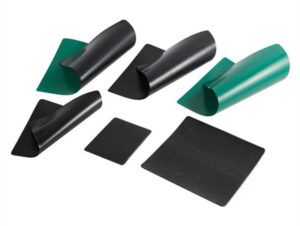
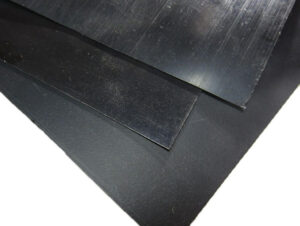
After the geomembrane is installed properly, the sheets that make up its surface are cut to size. Each sheet is individually cut according to the specific dimensions of the ponds, landfills, minings, or dams, ensuring an exact fit. It may require additional cutting or trimming on site, but these minor adjustments are easy when compared to making an entire sheet from scratch. In this way, geomembrane sheets can be delivered quickly and you can start installing them with minimal effort, while your projects will be fulfilled more efficiently than ever.
Installation is typically done by welding or heat sealing the geomembrane to the desired surface
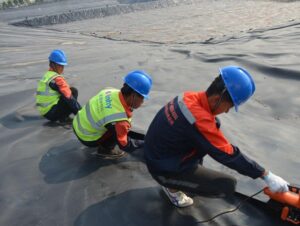
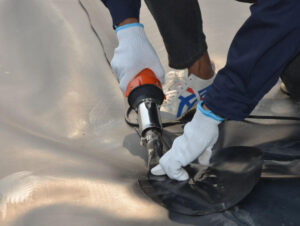
Installing geomembranes is a crucial process to ensure their longevity and effectiveness. The most common methods of installation are welding and heat sealing, both of which create a strong connection between the geomembrane and surface for increased durability. Welder operators should be skilled in geomembrane welding techniques in order to make sure the geomembrane is properly sealed to the surface. Heat sealing is often employed when welding isn’t possible, with an automated system that utilizes high-frequency heat presses to form strong seals. With either method, it’s important for professionals performing the installation work to be aware of potential sources of contamination that could affect geomembrane integrity, such as dust or moisture.
Geomembranes can be used for a variety of applications, including landfill liner systems, pond liners, and canal liners
Geomembranes offer a tremendously versatile option to protect both environmentally sensitive land areas and water sources against potential contaminants. From top-grade landfill liner systems that prevent hazardous waste from escaping to highly effective pond liners that keep sediment and silt out of the water source, and extremely strong canal liners designed to stop contaminants flowing off right-of-way acreage, geomembranes are a preferred protective product in countless environmental applications. Made from HDPE or LDPE, geomembranes provide significant strength and tear resistance with excellent flexibility even in extreme temperatures. Thanks to their multitude of uses, geomembranes are an essential tool for citizens around the world who seek to uphold environmental standards while managing risk exposure.
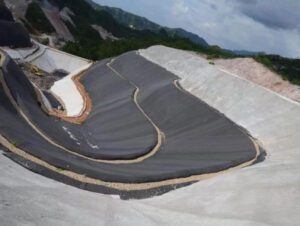
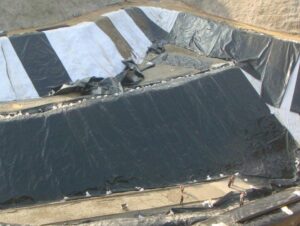
In a word, geomembranes are a vital part of many different projects and serve a variety of purposes. They are made from durable materials that can withstand a lot of wear and tear, making them ideal for anything from canal liners to pond liners. Installation is typically quick and easy, meaning you won’t have to spend hours trying to get the geomembrane in place. If you’re looking for an effective way to protect your project, then a geomembrane might be the right choice for you.
Types of Geomembranes Available
There are a variety of geomembranes available on the market, each with its own advantages and disadvantages. In this article, we’ll take a look at some of the most popular types of geomembranes to help you choose the right one for your project.
PVC geomembranes
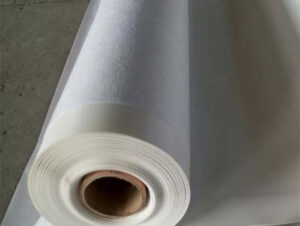
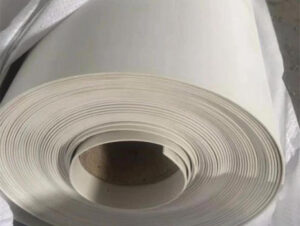
PVC geomembranes, made of polyvinyl chloride, are an effective way to protect the underlying earth, rocks, or subsoil from water leakage and contamination. These membranes are constructed from high-quality, flexible materials that provide strong protection against most chemicals and other hazardous materials. As an added benefit, these geomembranes are extremely durable – able to withstand the test of time without showing much wear or tear. This makes them a go-to choice for many applications, such as oil reservoirs, decorative ponds, and mining operations. All in all, PVC geomembranes offer excellent protection against liquids and chemicals with their chemical resistance properties combined with long-term durability.
EPDM geomembranes
EPDM geomembranes are highly efficient solutions for waterproofing applications in civil engineering and construction. The material is created from ethylene propylene diene monomer, known for its superior elasticity and toughness compared to other materials. To protect against the hot sun, this type of geomembrane has been specially designed to be UV resistant, and able to withstand long-term exposure with minimal deterioration. A host of resilient properties make EPDM geomembranes popular amongst experts in the field, who frequently use them in large projects worldwide, thanks to their overall longevity in withstanding damage from water and chemicals.
HDPE geomembranes
High-Density Polyethylene (HDPE) geomembranes are a form of plastic sheeting that’s used to maintain liquid and gas containment in industrial facilities. HDPE is a material that’s highly resistant to tearing and puncturing, helping ensure contents stay within the designated area. It’s also resistant to common industrial chemicals, so it won’t break down when used in wastewater applications or other areas where chemicals can seep through the ground. In addition, HDPE geomembranes block out ultraviolet light and resist microbial growth, making them ideal for direct exposure to weather and sunlight. Most importantly, this type of plastic liner helps protect our natural environment by delivering reliable containment control.
LLDPE geomembranes
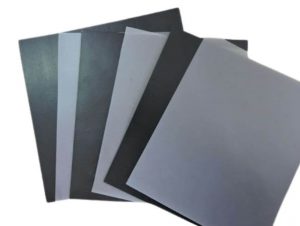
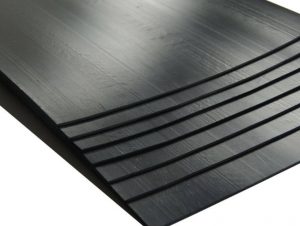
Linear low-density polyethylene (LLDPE) geomembranes offer a wide range of advantages for many industries. They provide outstanding protection and impermeability coupled with excellent chemical resistance. LLDPE has high weld strength, flexibility, and durability making it a preferred choice in waterproofing applications. It is an economical solution that can provide effective protection of the surface underneath and long-term performance without spending too much. This type of plastic material offers excellent environmental safety, making LLDPE geomembranes a notable and beneficial option for protective layers wherever chemicals may be present.
FPP geomembranes
FPP geomembranes are a popular choice for liners used in landfills and ponds for the purpose of containing waste and water. These durable geomembranes have excellent chemical and UV resistance properties due to their inner material makeup composed of fluoropolymer resin. Making FPP geomembranes highly resistant to heat, cold, and chemicals, they are capable of withstanding the most extreme environmental conditions. Furthermore, these versatile liners can be manufactured in any thickness or width to suit different project needs. With so many benefits coming from using FPP geomembranes, it is no surprise that they are a promising choice for waste containment tasks.
As you can see, there are many different types of geomembranes available on the market today. Each type has its own unique set of properties and benefits that make it ideal for certain applications. When choosing a proper type of geomembrane for your project, it is important to consider the specific requirements of your application in order to select the material that will best meet your needs. If you have any questions about which type of geomembrane is right for your project or would like more information about our products and services, please contact us. We would be happy to assist you in selecting the perfect solution for your needs.
Various Applications Of High-Quality Geomembrane
As a leading international supplier of high-quality geomembranes, we are often asked about the various applications our products can be used for. In this article, we have explored some of the most common uses for geomembrane to give you a better understanding of how this versatile product can be utilized. Whether you are looking to use a geomembrane for residential or commercial purposes, we are confident that both the above-mentioned and the following content will do you a favor before you make a decision.
Geomembrane is a material often used in construction and engineering projects
Geomembrane is a key material used in construction and engineering projects, commonly found in landfills, dams, and ponds. It serves as a waterproof lining in these areas, helping to contain and control water while also preventing seepage. Geomembranes are always designed with durability and stability in mind and they require little maintenance but will last for many years when properly installed, making them an ideal choice for projects involving hazardous or toxic materials. They come in various grades and thicknesses so that their use can be tailored to a wide range of projects, from ponds for fishing and recreational purposes to wastewater treatment plants.
It is impermeable, meaning it does not allow water or other liquids to pass through it
Many materials, such as polyester, are impermeable, which means that they do not allow water or other liquids to pass through them. This is a great quality for any form of waterproofing project, as it ensures that water does not soak into the soil. This material also has a protective layer that prevents water and wind damage, making it ideal for anti-seepage projects in landfills, minings, canals, or any other application even under extreme weather conditions. Additionally, these geosynthetics are fast drying which makes them even more effective than traditional materials, while still offering the same degree of protection.
Geomembrane can be used for lining ponds, lakes, and canals
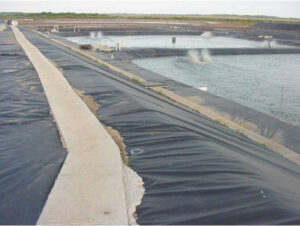
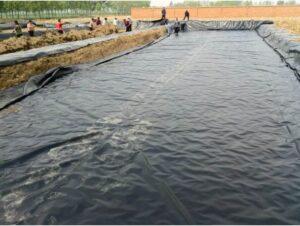
(Tinhy’s Quality Geomembrane Used For Pond Liners)
Geomembrane is a highly effective, cost-efficient method for controlling seepage in containing and storing ponds, lakes, and canals. Made from polyethylene or other waterproof materials, it has been installed as a lining solution for thousands of containment areas around the world. Some geomembranes have ridges and channels to further increase their effectiveness by preventing water migration across their surface. In addition to seepage control, geomembranes are also great at providing a safe environment by ensuring that chemical fertilizer or other agricultural products don’t leak out of a containment area into another body of water. Geomembrane’s durability makes it ideal for many water conservation projects!
It can also be used for landfill containment, mining, and agricultural purposes
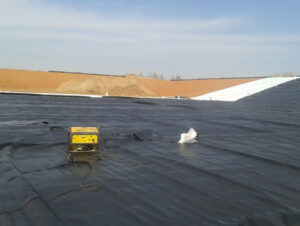
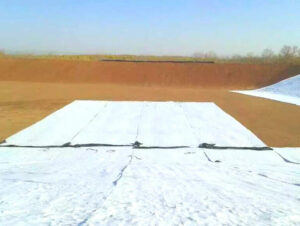
Geomembranes have become ubiquitous in our everyday lives, but their applications beyond the consumer market are equally essential. In fact, geomembranes are valued for their resilience and versatility in a variety of industries including landfill containment, mining, and agriculture. It’s known to be functional and durable even in extreme outdoor conditions, making it extremely beneficial for its various roles. Beyond this, it’s also cost-effective due to its efficient production capabilities – an attractive feature for businesses across many industries. Even with recent concerns about the environmental impact of plastic practices, alternatives are continually being researched to ensure all facets of its use are as safe and clean as possible – from production to disposal.
High-quality geomembrane is essential for these applications
High-quality geomembrane is essential for a range of industries, including agriculture, mining, and civil engineering. It’s hugely beneficial for protecting soil and groundwater from contaminants, keeping landfill deposits secure, and preventing wastewater seepage. Geomembranes are also used as liners in manmade ponds, lagoons, and fabrics as well as larger bodies of water. The material has multiple characteristics such as water resistance, chemical stability, tensile strength, and resistance to puncture that make it perfect for these applications. Used properly, geomembranes provide longevity and cost savings in the long run.
There are many suppliers of high-quality geomembranes available on the market today
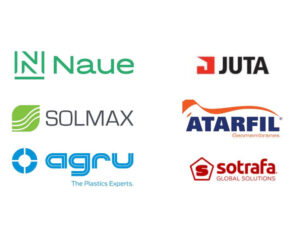
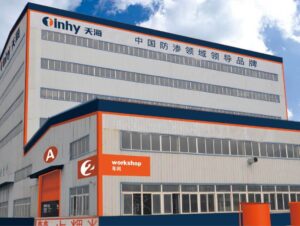
Getting the right geomembrane for your construction project can often be a tricky business. One of the best things you can do to guarantee top-notch quality is to find a trusted supplier who provides a wide range of choices. With so many varying requirements and conditions, it is important to find a good fit that meets your specific needs. Luckily, there are many reliable suppliers around today that offer high-quality geomembranes suitable for any kind of project. Doing research ahead of time and comparing the different options will help you locate the most reliable and cost-effective solution available.
All in all, the geomembrane is a versatile material with many applications in construction and engineering. It is impermeable, durable, and easy to work with, making it an ideal choice for projects that require containment or water resistance. When selecting a geomembrane supplier, it is important to choose a company that produces high-quality products. There are many reputable suppliers on the market today that can provide you with the geomembrane you need for your next project.
Future Developments In The Field Of Geomembrane Technology
The future of geomembrane technology lies in the development of materials that are more durable and have a longer lifespan. Additionally, research is being conducted into ways to make these products more environmentally friendly. Methods such as using recycled materials or biodegradable substances are being explored. This research is necessary in order to meet the ever-growing demand for these products. The market for geomembranes is expected to continue to grow in the coming years, so it is important that the industry stays ahead of the curve. By investing in research and development, the industry can ensure that it remains at the forefront of this rapidly growing field.
The history of geomembrane technology and how it has developed over the years
Geomembrane technology has come a long way since its inception in the early 1960s. It began as a solution for environmental containment and for the protection of hazardous waste sites against leaching. Since then, geomembranes have evolved to become an essential part of many industries and processes including aquaculture, landfills, secondary containment solutions, tailings ponds, wetland restoration, and even applications in reclaimed water management. As the technology continues to advance, geomembranes offer greater resistance to tear strength, elongation, and flexibility with enhanced puncture resistance capabilities – all critical factors when selecting a geomembrane material for environmental containment solutions. In recent years, advances in manufacturing technologies have helped create stronger yet more cost-effective geomembranes that provide greater levels of performance under harsher conditions. The use of custom additives has also made certain kinds of geomembranes, particularly well-suited to certain types of applications where strength or resistance is paramount. With such innovative developments in the field, it’s clear that the possibilities afforded by this groundbreaking technology are virtually limitless.
The different types of geomembranes that are available on the market today
With the growing demand for reliable containment solutions, artificially produced geomembranes have become an increasingly popular choice among a wide range of industries. There are different types of geomembrane products available on the market today, such as reinforced flexible membranes, thermoformed panels, and self-adhesive sheets. Depending on their intended use and requirements, they can feature various features such as high tear resistance, ultraviolet protection, low permeability, and good weldability. Geomembranes also provide superior environmental protection by helping to improve the overall durability of many products and systems. With their ability to provide reliable containment solutions in almost any environment or situation, it is no surprise that geomembranes are quickly becoming one of the most trusted materials for various industrial applications around the world.
The advantages and disadvantages of each type of geomembrane
Geomembranes are an important component of construction and engineering, as they provide strength and durability for a range of projects. While there are various types of geomembranes available to meet the needs of different projects, each type has its own benefits and drawbacks. For example, high-density polyethylene (HDPE) is the most commonly used type, designed for maximum waterproofing and excellent tensile strength. However, it does have low chemical resistance which could be a problem in certain environments. On the other hand, polyvinyl chloride (PVC) is resistant to many chemicals, but it can suffer from weathering which could lead to degradation over time. With careful consideration required to identify which geomembrane type is best suited for each project’s unique needs and conditions, it is clear that understanding the advantages and disadvantages of each can save money and losses down the line.
The future developments that are planned for the field of geomembrane technology
The continued development of geomembrane technology is a crucial step toward addressing global challenges in the 21st century. Thanks to advances in nanotechnology and materials chemistry, the industry has seen significant progress in the last decade, with this progress set to continue into the future. Currently, researchers are looking at innovations such as energy-harvesting geomembranes to extend their use beyond traditional applications such as mining and landfill liners. These developments offer exciting possibilities as solutions for energy storage, soil contamination prevention, and more, thus demonstrating the huge potential of this field for improving our lives.
To conclude, geomembrane technology has come a long way since it was first introduced in the 1960s. There are now many different types of geomembranes available on the market, each with its own advantages and disadvantages. The future of this field looks very promising, with many new developments planned that will benefit both consumers and businesses alike.
Conclusion
Geomembrane technology has come a long way since its introduction decades ago, today there are various types available on the market designed specifically for different applications ranging from agricultural irrigation projects to large industrial containment solutions. Manufacturers have developed specialized production processes that produce higher quality membranes faster than ever before while drastically reducing costs associated with installation labor as well as raw material costs through advancements in recyclable polymer resins and nano technologies allowing them to produce thinner yet stronger membranes than ever before without sacrificing performance or longevity over time. This article has provided an overview of what geomembranes technology is along with industry-specific uses cases demonstrating why it should be considered when designing infrastructure projects requiring effective protection against water infiltration or hazardous waste containment solutions needing reliable long-term performance at lower operational costs compared with traditional methods like concrete lining systems. Thanks for your reading!

